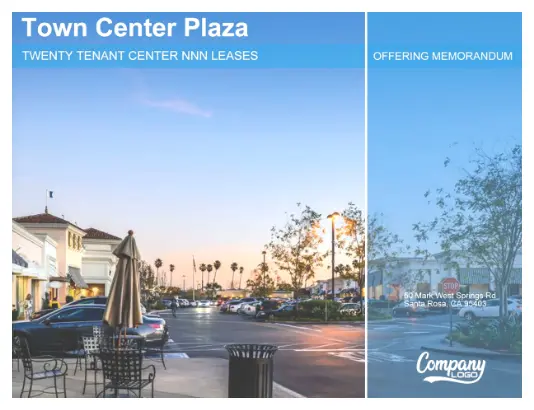When it comes to negotiating a commercial retail lease, there are plenty of lease provisions you should be aware of before signing on the dotted line. After all, it’s your responsibility as a tenant to understand what your landlord expects from you. And sometimes, that’s more money than you might expect to pay each month.
Though this doesn’t always happen, there are times when a percentage rent clause becomes part of a commercial lease agreement. As a way to ensure they receive great value from the business you run, landlords often charge a percentage rent in addition to the base rent you agreed to pay to lease the property.
If you’ve never heard of percentage rent in commercial lease, keep reading. Today we’re going to explain to you what percentage rent is, how breakpoints work, and ways to negotiate with your landlord so you get the best deal possible.
Let’s get started!
What is Percentage Rent?
Percentage rent is extra rent you pay your landlord that is ties to the sales you generate from your business. By charging a percentage rent, landlords are able to share in your growing success.
Though this seems unfair to tenants trying to run a business, it’s important to note that owning a commercial building comes with plenty of expenses that go beyond the square footage that’s being leased to you. For example, things like maintenance, marketing, and continuous improvement of not only the building but common areas surrounding it are things your landlord typically handles. For a landlord leasing a shopping mall, this ends up being quite costly.
By charging tenants a percentage rent, landlords are able to tap into the success business owners are reaping as a result of their hard work. And honestly, a tenant is always going to do more business in a busy commercial building as opposed to a deserted unit in a remote part of town.
So, in an effort to generate more revenue for themselves, and provide you the best commercial space possible, it’s possible your landlord might include a percentage rent clause in your lease agreement.
Commercial Lease Rent: A Breakdown
Rent as part of a commercial lease can be broken down into two parts: base rent and percentage rent.
Base Rent
The base rent of a commercial lease is a flat amount the tenant owes each month, regardless of whether their business is generating a profit or operating on a loss.
The base rent is usually calculated based on the floor area of the property. However, the base rent can also be a flat rate based on your business’ gross sales.
Base rent is helpful for business’ like fast food chains or coffee shops, both of which have fairly consistent and predictable revenue. In fact, their base rent would be loosely associated with their projected annual revenue.
On the other hand, businesses who have peak seasons (e.g. Thanksgiving or Christmas) may not be able to afford a consistently high base rent every month of the year. As a solution, a low base rent is charged, allowing the business to sustain a healthy cash flow during its slow months. However, you can bet business’ with a low base rent and seasonal sales will also have a percentage rent clause in their commercial lease agreement.
Percentage Rent
If a lease has a percentage rent clause, the percentage part of the rent is charged only after a business exceeds a specific amount of revenue that exceeds its gross sales. This is called the breakpoint.
The average percentage rent in the retail industry is 7%. That said, this value is not set
in stone and can be negotiated. In fact, different industries also find applications for percentage rent, where the value can differ significantly.
Breakpoints
When your business’ gross sales surpass a specified amount agreed to by both you and your landlord, your rent hits what’s called a breakpoint. From there, any sales you generate are subject to the percentage rent amount in your lease agreement.
Breakpoints ensure that businesses are not overburdened with high rent rates at low periods
of the year. At the same time, they allow landlords to profit when a business is doing well and turning a high profit.
A Practical Example of Percentage Rent
If this all seems like a lot to you, don’t worry, you’re not the only one. Let’s take a look at a real-life example to make things clearer:
You operate a consumer electronics store and you’re offered a retail space in a new strip mall. The contract includes a base rent of $5,000 per month and a percentage component of 7% of the gross sales, which is applied for every dollar above $150,000 – measured in gross income.
- In July, when shopping is typically down, the store generates $80,000 in revenue. This means only the base revenue of $5,000 is charged.
- In November, there’s Black Friday, and as a whole, shopping activity in your store peaks. The electronics store generates $250,000 in gross sales. The breakpoint is $150,000, so on top of the base rent (which is 5,000), the store also owes 7% of the $100,000 excess, equal to $7,000. Therefore, the total rent you owe for November is $12,000.
As you can see, when you have a percentage rent, the monthly rent you owe largely depends on your sales and can vary greatly from month to month. That’s why it’s important to understand your commercial lease in order to negotiate the best deal for your business.
What Is Included and Excluded When Calculating Percentage Rent?
Percentage rent is calculated from the gross sales of your business each rental period. This includes both cash and credit card sales at the time of merchandise delivery or performance of services. With credit sales, the risk of collecting (or specifically, not collecting) the revenue falls onto the tenant. In other words, if you process a transaction, but fail to invoice and collect for that transaction until next month, you might still owe your landlord a percentage rent.
Any discounts, refunds, credits, allowances, or price adjustments extended to individual customers are not accounted for when calculating percentage rent. If a sales tax is attached to the price of the product or service, it is also usually excluded.
How to Calculate the Natural Breakpoint of Your Percentage Rent?
A natural breakpoint in a percentage rent commercial lease is the amount of gross revenue at which the base rent becomes equal to the percentage rent.
For our consumer electronics store example, we have a base rent of $5,000 and a percentage of 7%. The natural breakpoint is $71,428.57, because 7% of $71,428.57 is $5,000.
You can calculate the natural breakpoint by dividing your base rent by your percentage rent. If we express the percentage as a fraction, the calculation is really easy.
$5,000 /(7/100) = $5,000 * 100 / 7 = $71,428.57
In a lot of commercial leases, the percentage rent breakpoint is simply the natural breakpoint. This ensures the landlord always receives a fixed percent of gross revenue or more in rent.
When the tenant suffers a lack of sales for the month, the base rent is still charged and it represents a larger percentage of the tenants’ gross income. In other words, the business faces a greater relative charge when they have the least amount of business.
For our example, if the electronics store only yields $45,000 in revenue, the base rent of $5,000 represents 11.11% of their gross income.
If the agreed breakpoint in the lease is higher than the natural breakpoint, the business benefits from a reduced rent compared to their gross income.
For our example, if the electronics store yields $75,000 in revenue, but the breakpoint is set at $80,000, then the base rent of $5,000 is only 6.67%.
Rent Periods and Sales Auditing
Since percentage rent is directly calculated from the gross income of the business, the landlord will expect the tenant to provide sales reports either monthly, quarterly, or annually.
If reported monthly or quarterly, usually a final annual report is required to nullify any previous errors and adjust the percentage rent accordingly.
The tenant’s sales records must be made available for audits by the landlord. Usually the landlord will request an annual audit by a certified external accounting company.
Tips for Negotiating Percentage Rent
Oftentimes your prospective landlord will provide a ready-made lease contract configured with their preferred base rent, percentage rent, and breakpoint. However, that does not mean these figures are set in stone.
You can and should negotiate.
Tenants should strive for the lowest possible base rent and percentage rent, while also seeking the highest possible breakpoint. There’s no magical leverage to help you achieve that, but you can balance the terms to better suit your business.
New or Slow Businesses
Businesses that have just opened their doors, or project a slow revenue growth can benefit from a higher base rent and a higher breakpoint.
For example, consider a base rate of $5,500, percentage of 7%, and breakpoint at $90,000 (naturally at $78,571.42). Right up to that breakpoint, the business can benefit from a rent equal to just over 6.11% of their gross sales.
Highly Seasonal Businesses
Alternatively, highly seasonal businesses with volatile monthly revenue can gain an advantage from a low base rent and a higher percentage rate.
For example, a base rate of $4,500 could secure businesses some extra cash flow when sales are slow. If we increase the percentage rent to 8.5% and set the breakpoint at $60,000 (naturally at $52,941.18), the business would still save a significant amount of money, even during the strong months.
If November and December yield gross sales of $100,000, the tenant would need to pay $3,200 in additional percentage rent, or a total of $7,700 per month. That’s an increase of 71%, but there is enough revenue to absorb the extra cost and return profit for the business.
Wrapping Up
In the end, percentage rent in commercial leases is not a difficult concept to grasp. Though it is more complex than a flat rent arrangement, it shouldn’t be too difficult for any business owner to figure out. That said, the devil is in the details and understanding your commercial lease agreement before you agree and sign is crucial to the overall success of your business. After all, your landlord isn’t the only one looking to generate a profit.
Are you ready to advertise your commercial space as available to tenants and want to make sure they understand all the details, including the percentage rent clause that you intend to add to the agreement? Then take advantage of the beginner friendly online platform CREOP. Designed to make marketing commercial properties a breeze, complete with everything a potential tenant would need to know before agreeing to lease from you, this advanced software makes your job easier, so you can concentrate on more important things, like getting lease agreements signed.
Get in touch today and see how we can help you lease your commercial space with ease.





